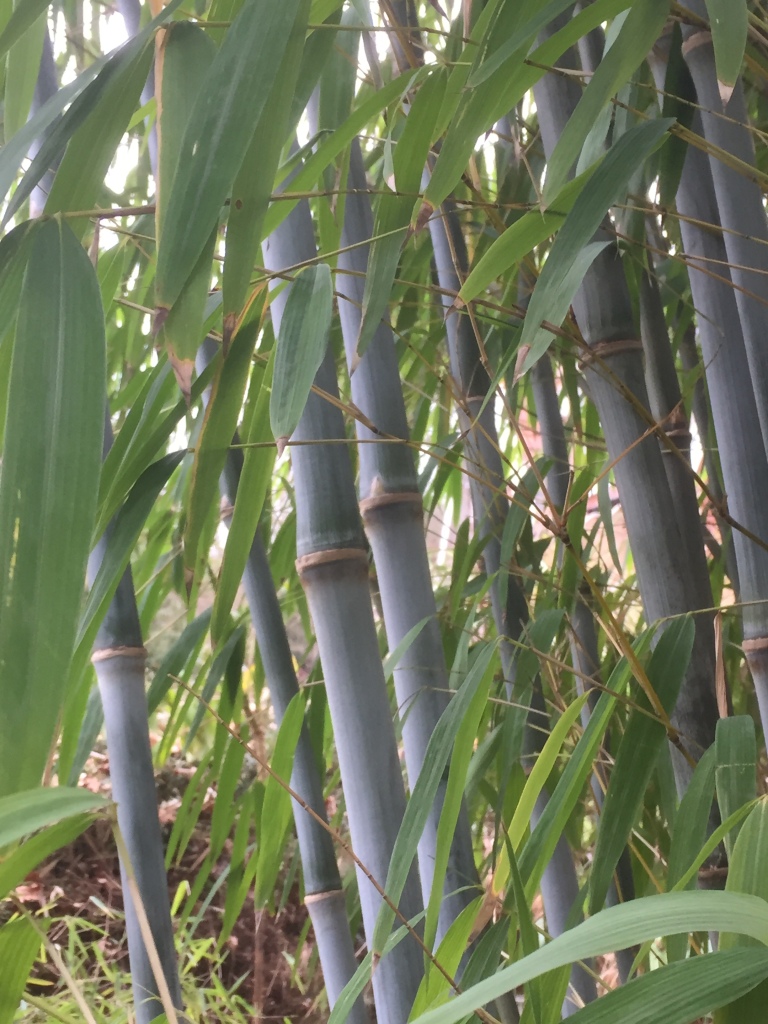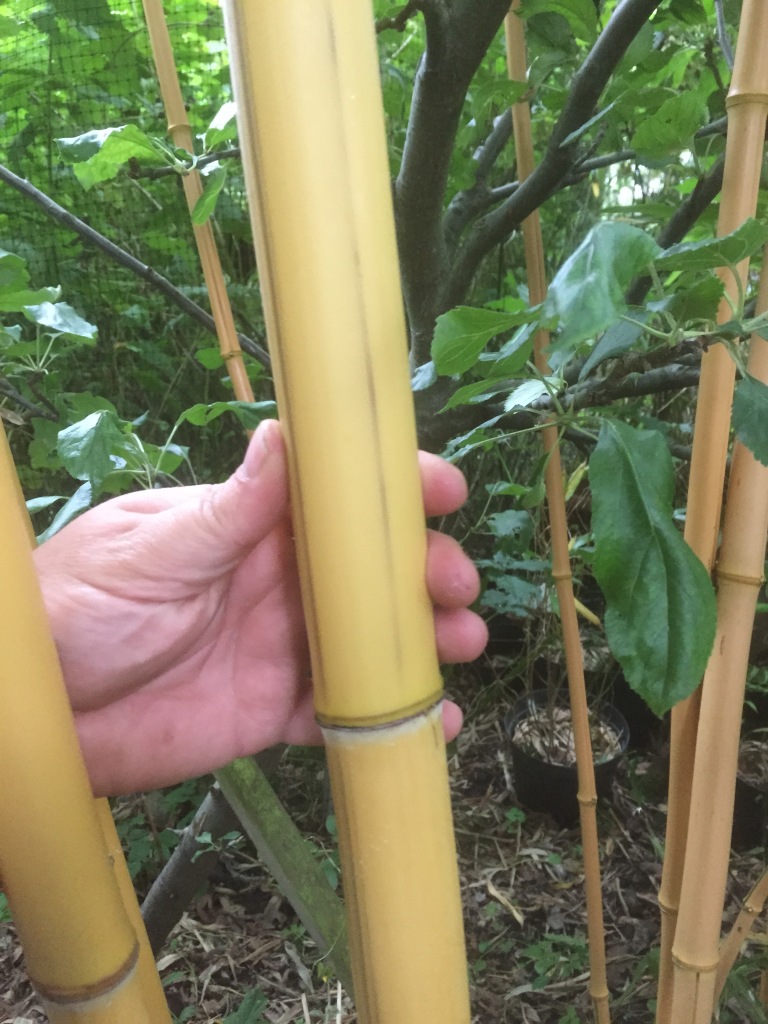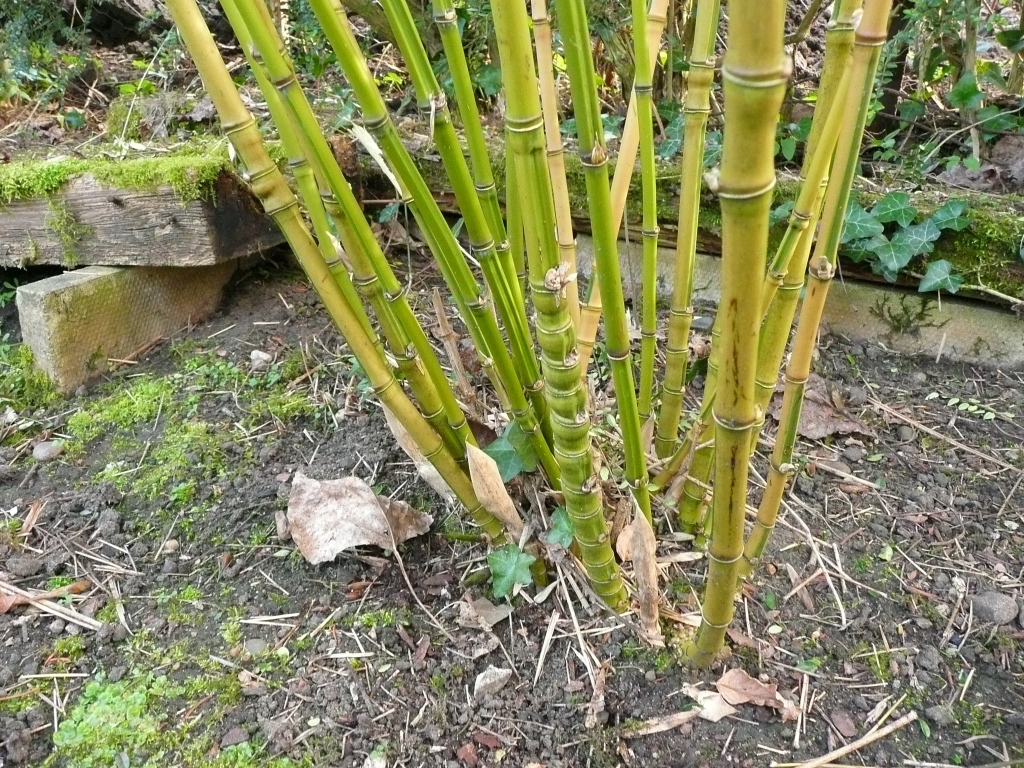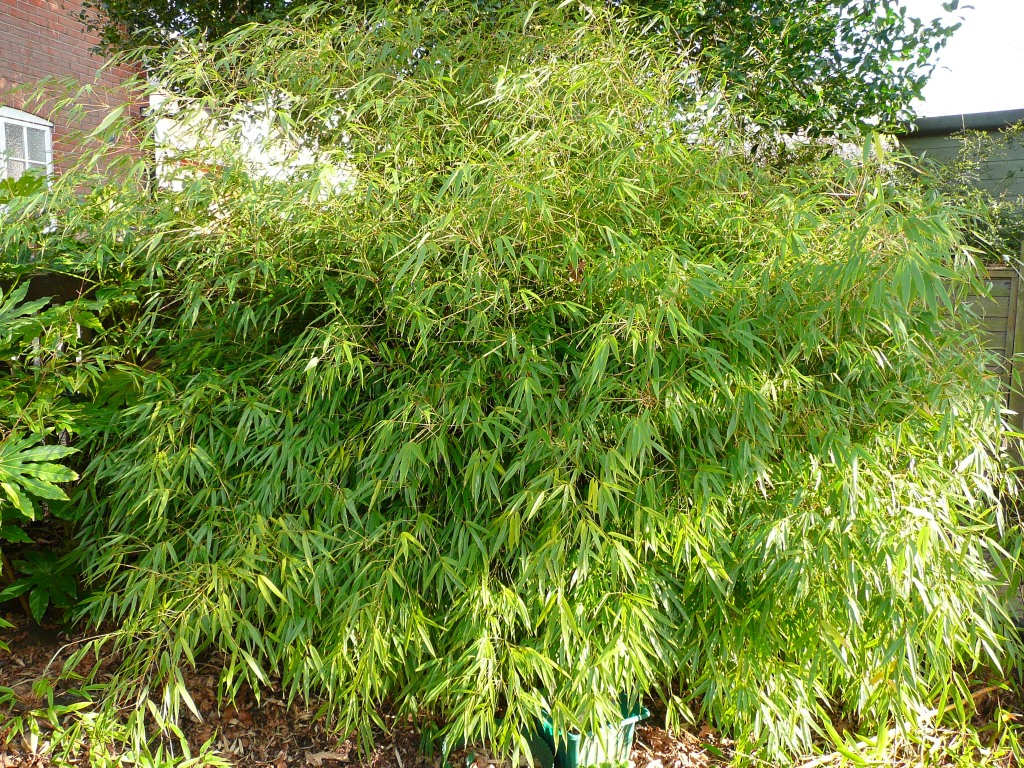Bamboo is an extremely effective and decorative screen in the garden. Being evergreen, it blocks unsightly views all year round. The gentle sound of the foliage and its thickness means it is quite effective at filtering unwanted noise as well. Bamboo can also be used as a windbreak, although in exposed positions only the tougher species such as Pseudosasa japonica should be used. Pseudosasa japonica is also the best choice for screening salt winds, though measures must be taken to manage its spread. As always with bamboo, the most important thing is to choose the right variety in the first place.

The first thing to consider is height. If you want a really tall screen, over about 4m (16ft), you will need to go for a running bamboo. Clumpers don’t generally get above this height, and some are quite a bit shorter. Most Borinda species (clumpers) are exceptions to this, but are both expensive and hard to find. So if you wanted a tall but narrowish screen, where one plant would do, a Borinda would be a very attractive possibility. If you are looking at screening a longer length, a Phyllostachys species would be more economical. Phyllostachys aurea is widely available, tough, very hardy, and grows 5-8m (16-26ft) depending on conditions. It is a running bamboo, but generally quite well-behaved. (For more on clumping and running bamboos see here). For a taller screen still, Phyllostachys vivax or one of its forms would be a good choice. It can get over 8m (26ft) in the right conditions. It’s also quick to mature, with lovely thick culms, and several of the forms are very decorative, such as P. vivax f. aureocaulis which is a beautiful sunshine yellow with occasional fine green stripes. On the downside it doesn’t have much foliage low down on the culms, and is more vigorously spreading than P. aurea.

Phyllostachys vivax f. aureocaulis
The next thing to consider is the width of the planting. Generalising somewhat, running bamboos tend to be more upright, while clumpers tend to have a wide mushroom cloud of foliage over a narrower clump of culms. You should also consider the width of the planting area available. The taller you want your bamboo to be, the more growing space for the rhizomes you will need. So, for example, if you had a bed 30cm (1ft) wide, you couldn’t grow a bamboo to 8m (26ft) tall in that space. In fact only the smallest bamboos, such as Pleioblastus auricomus at 1-2m (3-6.5ft), could be grown in such a narrow space, and as it is quite invasive would need work to control it. The best option for such a small space would be to grow bamboos in containers.

The third factor to consider is how you will control the spread of your bamboo screen. If you are planting along a boundary I would always recommend using a barrier of some kind, even if you are planting clumpers. Though they will never send out runners, the clumps do expand in width every year and will eventually come up just the other side of the fence. There are a number of options you can use. I use a line of recycled concrete pavers on edge in the ground, overlapping an inch or so and also sticking up an inch or so above soil level. They are angled very slightly away from the bamboo, so that a runner meeting them is encouraged upwards. When it pokes over the barrier it is easy to see and trim. Bamboo rhizome barrier is available, but not cheap, and I know of one grower who swears by damp proof membrane! For a running bamboo you can encircle the entire planting area with a barrier, giving it the most space allowable, but after many years it will effectively become ‘potbound’ and will try to break through. I put a barrier along no more than three sides of a plant, so it can only spread out of bounds in one direction and I can cut and dig out rhizomes should it eventually become necessary.
Fourthly, and related to all the above factors, is whether to plant your screen of bamboos in the ground or grow them in pots. The advantage of growing in containers is that the spread is controlled and you can grow almost any species you like regardless of how invasive it would be in the ground. The disadvantages are that the plants will stay shorter than they would in the ground, and that you will have to water them. Bamboos established in the ground are pretty drought tolerant, but in pots will die if allowed to dry out completely. If you need height, P. vivax will still get to a decent height in pots, and the larger the container you can give it the taller it will get.

The final thing to consider is the likelihood of flowering. Bamboos flower very infrequently, with gaps for many species upwards of thirty years. However, there is always a small chance, and clumpers in particular are likely to die if they flower completely (more on bamboo flowering here). If planting a long row of clumping bamboos it is a very good idea to choose a mix of species and varieties, so that if you are unlucky you only lose one or two plants and not the whole row. Fargesia nitida and its numerous forms have flowered since the 2000s so are unlikely to flower again soon. A number of hybrids between F. nitida and F. murielae have recently become available, show promising vigour (F. murielae itself is very slow to get going) and also should not flower for many years. F. robusta and its forms are among the taller clump formers at 4-5m (14-16ft). F. rufa is one of the shortest, topping out at 3m (10ft), but has a particularly wide cloud of foliage, is quick growing, and tough as old boots.
